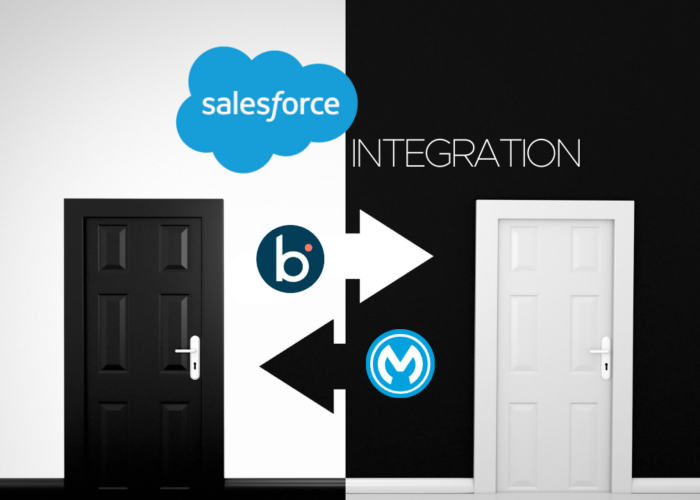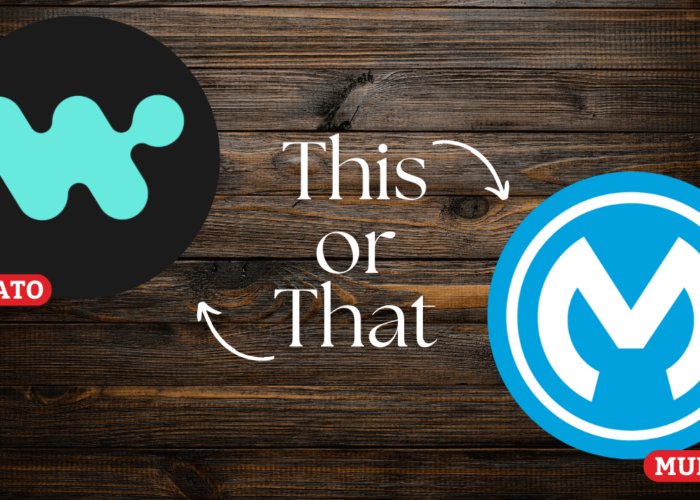WSO2 and Mulesoft are notable names in the integration sphere. They possess many similarities and differences that warrant a side-by-side comparison to fully illustrate their advantages and disadvantages. This article will explore WSO2 vs Mulesoft, comparing and contrasting between the technology providers’ integration offerings to uncover which use cases they fit the best.
Knowing WSO2 vs Mulesoft features will orient your company’s integration strategy towards an optimal technology selection, implementation, and utilisation. Ultimately, your organisation should increase the output of its business operations while sufficiently decreasing overhead expenses.
|
What services does WSO2 provide?
WSO2 is an established integration software vendor that aims to minimise the burden of handling your core IT infrastructure, allowing your developers to concentrate on digitising business processes. They provide a variety of products that are split into two general categories: AppDev and CIAM.
AppDev
The AppDev category stands for Application Development. Most of the solutions that fall under this classification are low-code and developer-centric; they are focused on transforming the task of writing code into a simple yet highly productive endeavour. This category contains the following tools under these sub-categories:
Choreo Internal Developer Platform
A cloud-based application that takes care of the entire development lifecycle including the deployment, running, and governance of your integrations and APIs. It is especially suited to distribute the adoption of Kubernetes across your organisation.
API Management
- Choreo API Manager: it aims to discard the complexities that arise due to managing the underlying infrastructure so that the development of enterprise-grade APIs becomes simpler, faster, and more widespread (possible in multiple coding environments). Using Choreo API Manager, APIs can be deployed across a multi-cloud, region-independent ecosystem.
- API Manager: this enterprise-grade, infrastructure-agnostic API management service offers an extensive set of features that addresses a similar range of concerns to the Choreo API Manager. It simplifies the process of integrating services together and exposing them as well-maintainable APIs. After the creation of APIs, it also empowers users to log the history of changes and roll back to any API version when the situation calls for it. Apart from handling the full API lifecycle, it enables easy discovery of APIs through a developer’s portal, makes sure that they follow policies and standards, and monitors them for state changes that may impact business intelligence.
Integration
- Choreo iPaaS: this iPaaS provides a user-friendly way for developers to create integrations. It enables developers to connect the IDE of their choice so that development can take place within their preferred environment. It also facilitates event-driven integrations and connectivity between different systems using 1000+ connectors.
- Micro Integrator: this tool is an integration runtime of WSO2 Enterprise Integrator (WSO2 EI). Integration runtimes bridge the gap between cloud and on-premises services, activities, and data sources, streamlining data movement and security management. Likewise, Micro Integrator (WSO2 MI) is a low-code, cloud-native environment that promotes integrations between SaaS, proprietary, and legacy systems. Micro Integrator can also be deployed as an ESB and act as a central point of integration between cloud services and legacy systems, both in the cloud and on-premises. It also adheres to important messaging standards.
- Ballerina: if developers choose not to utilise drag-and-drop tools, the Ballerina programming language offers the necessary abstractions and libraries to write integrations. This includes automated workflows, event-driven integrations, and API-driven integrations.
Choreo Cloud Native App Developer
This tool allows developers to focus only on the app logic (developed in a language of their choice) whilst handling the backend technologies and concerns such as APIs, communication protocols, and security. This is particularly useful for the development of web and mobile applications.
Identity and Access Management
The IAM category stands for Identity and Access Management. These tools allow enterprises to assign permissions and roles to customers so that there is an increase in data security across all applications and services. WSO2 has three offerings that fall under the umbrella of IAM:
- Asgardeo: a SaaS solution for CIAM problems, Asgardeo improves customer experience for a wide range of users. It does this by providing tools that can implement privacy, security, and identity measures tailor-made for your applications (so as not to hinder future extensions made to the app itself). It also comes with intrinsic support for identity and security standards like SAML, SCIM, OIDC, and FIDO2.
- Identity Server: an alternative to the SaaS solution Asgardeo, Identity Server covers similar IAM pain points. It protects customer identities and security by implementing concepts like SSO and consent management, ultimately allowing the company to expand its user base in a safe manner.
- Private CIAM Cloud: it offers an optimised private cloud that is fully managed and monitored. It is particularly suited for complex B2C and B2B management scenarios. It grants enterprises the ability to create different levels of B2B hierarchies, enabling the administrators of participating organisations to manage their own roles, policies, and procedures.
What services does Mulesoft provide?
Mulesoft’s major integration offering is its Anypoint Platform. This iPaaS provides many functionalities including out-of-the-box connectors, API management for the full lifecycle, monitoring and analysing integration traffic, and so on. Here is a brief explanation of the different components of the Anypoint Platform, each falling into three different categories:
API Management
- Anypoint Flex Gateway: secures APIs no matter where they run, in turn providing enterprise-level security throughout the environment. Collaborates well with DevOps and CI/CD workflows.
- Anypoint API Governance: ensures uniform quality for all APIs across different teams during the design phase itself. This helps reduce overhead from reviews in later phases.
- Anypoint CLI: a fundamental step in applying good API governance, the Anypoint CLI empowers the user to catalogue API definitions and metadata using any CI/CD tool (Anypoint CLI is tool-agnostic in this case). You can also identify the APIs in the project directory easily and automate the process of publishing APIs to Anypoint Exchange.
- Anypoint API Manager: allows you to manage all your APIs from a centralised spot, including concerns like API security, policies, and client access.
- Anypoint API Community Manager: it enables the creation and transformation of developer portals to suit the users’ tastes. Moreover, it helps foster a community of developers, partners, and consumers who will be working with your APIs by allowing you to utilise developer forums and interactive documentation.
Integration
- Anypoint API Designer: enables developers to create APIs quickly using features such as pre-built API fragments and real-time governance scans.
- Anypoint Studio: an IDE that consists of pre-built modules covering common integration use cases. This can be done using a simple drag and drop mechanism.
- Anypoint Connectors: using a web interface or IDE on your desktop, Anypoint Connectors enables integration between SaaS applications through hundreds of pre-built connectors. It results in enterprise-grade connectivity with centralised configuration for all systems.
- Anypoint Exchange: it prevents development from scratch by opening up a marketplace for pre-built assets as well as assets from previous projects. When Exchange connects with API Community Manager, you can even publish assets and encourage developers to get started with them via a self-service developer portal.
- Anypoint DataGraph: its main function is to unify disparate APIs into one service so that a single request from the developer can consume multiple APIs at once.
- Anypoint Partner Manager: a partner management tool that allows developers to integrate and manage APIs in a way that agrees with partner requirements.
- Anypoint MQ: this service handles forms of asynchronous communication such as cloud message queues and publisher-subscriber queues. It ensures that the queues promote secure message delivery to and from applications.
- Anypoint Code Builder: this feature is still in the beta phase. However, the idea behind it is a single IDE for designing and building APIs, integrations, and automations. It also has in-built recommendations for API and integration development.
Deployment and Monitoring
- Anypoint Runtime Manager: this acts as the interface to the Anypoint platform. This is where users can find all information about their applications and APIs no matter where they are deployed.
- Anypoint Monitoring: a visibility tool that focuses on keeping the user updated on the health of their overall application ecosystem.
- Anypoint Runtime Fabric: a service used for container orchestration and automation. It is also a central point of control for deployments to any target like Azure, AWS, Google Cloud, etc., or your own on-premise infrastructure.
- CloudHub: this feature of the Anypoint platform is a fully managed cloud platform as a service (PaaS) that has a diverse range of tenancy options available globally. It does a great job adhering to regional compliance requirements. It also achieves scalability and isolation through containerisation.
- Anypoint Security: additional security for your APIs and integrations that applies advanced concepts such as edge gateways (decentralised and located close to the source of your data, which may be at the farthest points of your enterprise network) and tokenisation of critical data.
In addition to the Anypoint platform, the Mule ESB extends a modern solution to attain the most value from your legacy and on-premises systems by integrating them with SaaS applications. This creates composite services that execute important business processes in one go.
WSO2 vs Mulesoft: What is the difference?
By drawing a comparison of WSO2 vs Mulesoft, we can come away with newfound insight into the two providers’ products and capabilities. In this article, we will focus on seven key areas for comparison.
Integration
On comparing WSO2 vs Mulesoft integration, we can say that both of them offer powerful integration capabilities.
One of the major advantages of WSO2 is its open-source status. It comes equipped with an enterprise service bus (ESB), API management, and identity and access management. Due to its open-source nature, WSO’s integration platform offers more leeway for customisation. This can help organisations create complex integrations through fast and flexible means.
MuleSoft’s Anypoint Platform is also an all-inclusive integration solution. It includes an ESB, facilities for data integration, automation of workflows, and API management. However, the Anypoint Platform is more user-friendly than the WSO2 platform, requiring a lower level of technical expertise. This is because it comes with a robust collection of pre-built connectors and reusable integrations that uncomplicates the task.
API Management
A big advantage of the Anypoint platform in the WSO2 vs Mulesoft debate is its ability to create API compositions. This means that disparate backend results can be aggregated and sent to the user in one go. This API-led connectivity promotes application composability; it encourages the reuse of pre-existing, efficient applications or parts of their functionality without building brand new ones.
WSO2 is highly customisable and open-source, which also contributes to its higher level of stability. It excels in policy management, issue management, and integration with identity and access management tooling. However, it is rather cumbersome when compared to a modern API management solution. This is illustrated by the software’s need for additional configuration files which can distract developers from configuring the actual APIs.
ESB
The Mule ESB is based on Restful API Modelling Language (RAML) which is optimal for REST API development. Furthermore, it comes with a wide range of connectors that fulfil many integration requirements. Mule API gateway is also a powerful addition to an API-based solution since it enables attributes like throttling, oAuth, etc. While easy integrations can be achieved using its connectors, the Mule ESB may require experienced personnel to get the most out of it. For complex integrations, there may be a difficult learning curve and a need for additional support.
WSO2 Micro Integrator is an easy-to-use, low-code component that comes in-built with the latest version of WSO2 API Manager. It is also an incredibly scalable option. However, it has a small set of features, which limits its application to scalable containerised solutions.
Identity and Access Management
The WSO2 Identity Server is open source and flexible in terms of configuration. It covers many solutions like OAuth, OpenID, SSO, Multi-factor authentication, and so on. However, the product is complex and demands a strong technical foundation from its user.
On the other hand, the Anypoint platform’s access management components are difficult to implement for larger organisations. For instance, the platform does not allow entries for existing users to be reused.
Monitoring
Both WSO2 and Mulesoft come with monitoring tools that empower enterprises to trace how well their integrations operate.
WSO2 provides WSO2 Streaming Integrator (SI), a real-time streaming and batch data processing platform that allows users to gain actionable insights and progress their business goals. Features like real-time analytics and alerting allow organisations to stay up-to-date on different internal and external processes, whether that be in the technical or business realm. It is also great for real-time and complex event processing, making it a great tool for building event-driven architectures.
Anypoint Monitoring does a great job with end-to-end monitoring. It helps visualise real-time monitoring data through its customisable dashboard and provides statistics that leads to effective troubleshooting.
Once again, Mulesoft excels in the user-friendliness and maturity category, whilst WSO2’s monitoring capability is more lightweight, customisable, and flexible.
Support and documentation
Since Mulesoft belongs to the Salesforce family, the level of training and support is far more advantageous.
WSO2 provides a strong repertoire of documentation illustrating the nuances of their products. While it has made progress in the support department, it doesn’t live up to the robust support frameworks that Mulesoft provides with its shared service IT team and support community who help with foundational concepts, design paradigms, and so on.
Costs
Mulesoft offers the ability to purchase API Management and Integration functionalities separately, or procure the entire Anypoint platform. They usually operate on an annual subscription basis to offer users some level of flexibility. Although the Anypoint platform may start with a base price, costs usually vary based on the use case your organisation is targeting. This is why Mulesoft doesn’t publish fixed prices and encourages contacting them for a quote that reflects a more accurate pricing for different needs.
On the other hand, WSO2 has published set subscription tiers for its API Manager and Asgardeo service offerings. API Manager, for instance, has a free open-source option, a $500/month Micro tier (billed annually), and a $2000/year Standard tier. It also has a custom tier depending on the number of API calls and deployment environments you’ll need. Therefore, especially when it comes to the API Management capability, Anypoint platform is the more expensive option due to the need for negotiating based on resource consumption.
Nevertheless, while there is a free trial for the Anypoint platform, WSO2 only offers a free trial for its API Manager and not Choreo, its iPaaS solution.
WSO2 vs Mulesoft: an overview
Below is a high level overview of the key points whilst comparing WSO2 vs Mulesoft:
| WSO2 Services | Mulesoft Services | |
| Integration | Due to its open-source nature, WSO’s integration platform offers more leeway for customisation. | Anypoint Platform is more user-friendly than the WSO2 platform, requiring a lower level of technical expertise. |
| API Management | WSO2 is highly customisable and open-source. However, it needs a lot of additional configuration files to operate. | APIs can be merged to get results from multiple backend systems at a time. This API-led connectivity promotes application composability. |
| ESB | WSO2 MI is low-code and incredibly scalable. However, its functionality is limited to scalable containerised solutions. | While it is great for complex integrations and API solutions (especially REST APIs), it needs to be leveraged by experienced personnel. Otherwise, it may call for a steep learning curve. |
| Identity and Access Management | The WSO2 Identity Server is open source. However, the product demands a strong technical foundation from its user. | Mulesoft access management is difficult to implement for larger organisations. For instance, existing users cannot be reused. |
| Monitoring | WSO2’s monitoring capability is more lightweight, customisable, and flexible. | Mulesoft is more mature and user-friendly. |
| Support and Documentation | Good documentation, but does not have the same level of support as Mulesoft. | The level of training and support is far more advantageous. |
| Costs | Total cost of ownership is less, especially for API lifecycle management. | Anypoint platform is generally more expensive. |
Conclusion
Ultimately, we can draw several conclusions from the WSO2 vs Mulesoft debate. On one hand, Mulesoft’s Anypoint platform is clearly the feature-rich product among the two. However, this may not be a justifiable investment in scenarios where the features prove to be extraneous, especially keeping in mind the high price point. WSO2 has better value in terms of total cost of ownership.
Want to know more about WSO2 vs Mulesoft? Chakray can guide you throughout your integration process—from technology evaluation and selection all the way up to the maintenance of your optimised IT infrastructure. If this is what you’re looking for, be sure to contact us.


Talk to our experts!
Contact our team and discover the cutting-edge technologies that will empower your business.
contact us



